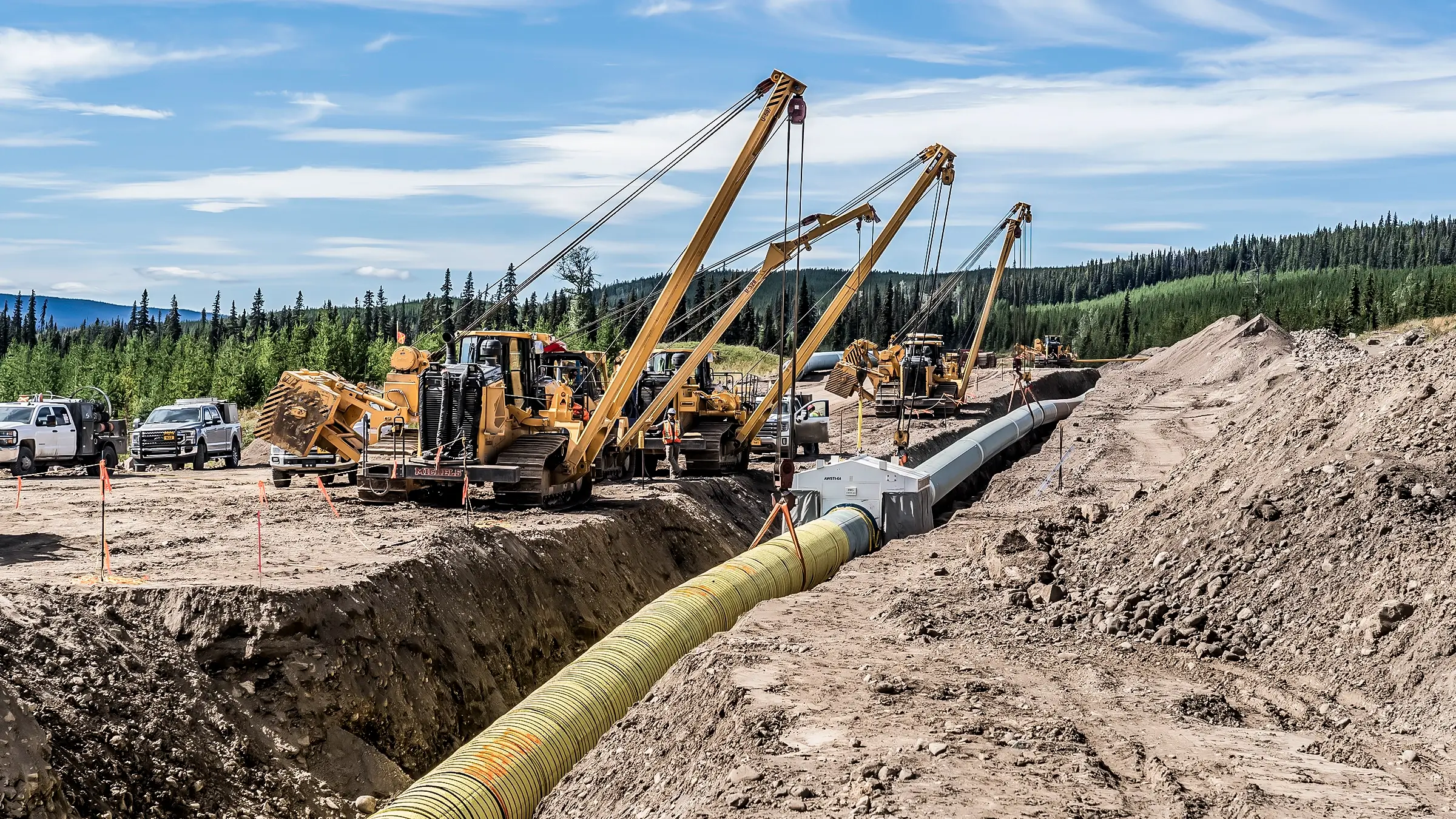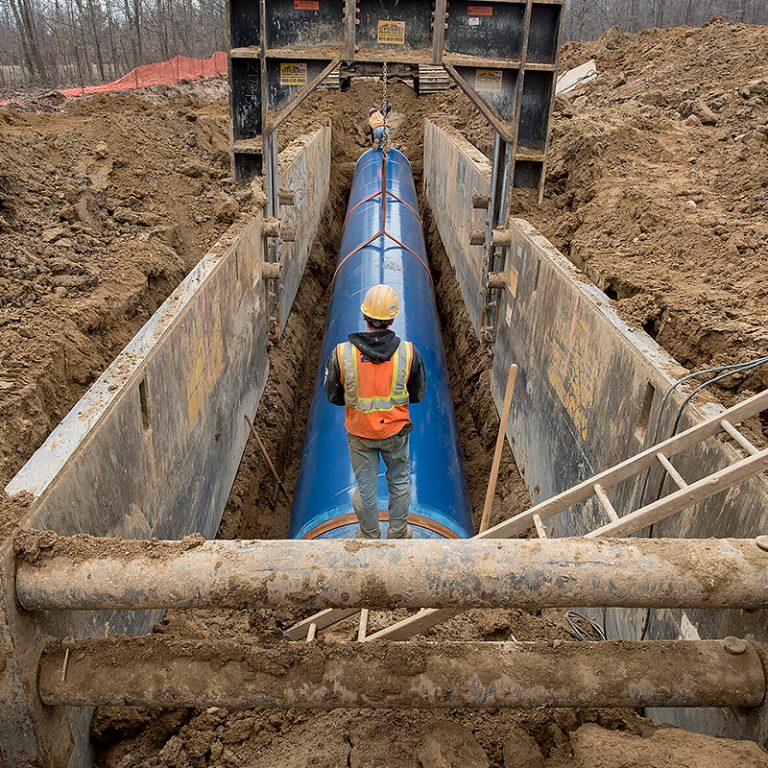Going Green With Creek Pipe HDPE installation Techniques
Recognizing the Basics of Pipes Installation: What You Need to Know Regarding the Refine
Proper pipe installation is essential for any type of pipes system. It needs mindful factor to consider of various elements, including material selection and adherence to local guidelines. A tactical format can prevent issues like pressure loss, while the right tools ensure effective joining techniques. Also experienced installers can make common mistakes. Understanding these basics can cause an extra reliable and long lasting system, triggering a better check out the crucial elements associated with the procedure.
Picking the Right Products for Pipe Installation
When considering pipe installation, the selection of appropriate materials is crucial to ensuring resilience and functionality. Numerous products are available, each offering unique benefits and considerations. PVC pipes are lightweight, resistant to deterioration, and cost-effective, making them suitable for property pipes. Alternatively, copper pipes, understood for their durability and capability to hold up against heats, are typically liked for heating systems.Additionally, galvanized steel pipes give toughness and toughness, ideal for sturdy applications, although they are at risk to rust over time.For underground setups, polyethylene pipes are favored due to their flexibility and resistance to stress and anxiety fracturing. Correct material choice depends on the details needs of the project, consisting of pressure ratings, temperature variants, and the chemical nature of the liquids being delivered - Creek Pipe Company. Eventually, educated choices pertaining to pipe materials add substantially to the general success and longevity of plumbing systems
Understanding Local Building Regulations and Regulations
How can understanding local building codes and laws influence pipe installation? Familiarity with these codes is necessary for making certain that pipe installations are safe, compliant, and reliable. Local structure codes outline certain needs relating to products, installation methods, and precaution, which should be adhered to to avoid possible legal concerns and costly fines.Failure to abide can result in inspections being stopped working, hold-ups in task conclusion, and even mandated elimination of improperly set up pipelines. Furthermore, comprehending zoning regulations and policies can influence the kind of products allowed, in addition to the approaches made use of for installation.Contractors and property owners alike ought to spend time in evaluating neighborhood guidelines prior to commencing any kind of installation task. This positive method not only advertises security but likewise enhances the overall high quality and durability of the plumbing system, inevitably fostering long-term performance and satisfaction.
Preparation Your Pipe Design and Layout
Correct preparation of pipe layout and layout is necessary for accomplishing an effective plumbing system. This procedure begins with evaluating the details requirements of the room, considering the area of fixtures and devices. Precise dimensions guarantee that pipes are properly routed, minimizing bends and transforms that can bring about push loss.Consideration of the circulation rates and the kinds of materials made use of is crucial, as various materials have varying longevity and compatibility with plumbing systems. Additionally, the designer needs to represent future developments or alterations to the format, permitting adaptability in instance of renovations.Efficient water drainage and air flow are also significant components of the style, as they avoid obstructions and ensure correct waste elimination. Ultimately, cooperation with regional building ordinance ensures conformity and safety, which is vital in any kind of pipes installation project.
Crucial Tools and Tools for Installation
Successful pipe installation depends upon having the right devices and equipment at hand. Vital devices include pipe cutters for clean cuts, wrenches for tightening fittings, and pliers for grasping and turning pipes. Furthermore, a level assurances pipes are mounted equally, while a measuring tape help in attaining precise lengths.For particular products, a blowpipe might be necessary for copper pipes, while a PVC cutter is necessary for plastic alternatives. Safety tools, such as handwear covers and safety glasses, shields installers from potential hazards during the process.A pipe bender can be especially valuable for developing smooth contours without jeopardizing honesty, while a torque wrench guarantees that connections are protected to the supplier's specifications.Having these devices conveniently available not only helps with a smoother installation process however likewise adds to the overall resilience and functionality of the plumbing system. Correct equipment is important in achieving lasting outcomes.
Methods for Proper Pipe Signing Up With and Sealing
Attaining a safe and leak-free connection between pipelines calls for cautious attention to joining and securing methods. Various methods exist, each suited to various pipe products and applications (Creek Pipe pipeline construction). As an example, welding is typically employed for steel pipelines, guaranteeing robust links through warmth fusion. In comparison, plastic pipelines gain from solvent cement or blend welding, creating solid, long-term bonds.Threaded links are usual in both steel and plastic piping, requiring exact placement and making use of proper old excavators for sale sealants, such as Teflon tape or pipe dope, to avoid leaks. Compression installations use one more alternative, where mechanical stress safeguards the pipelines with each other, making them quickly took apart for maintenance.Regardless of the method selected, correct prep work is vital. This consists of cleansing pipe ends and guaranteeing they are without particles. Executing these strategies carefully will enhance the longevity and dependability of the pipe system, inevitably adding to its efficient performance
Usual Errors to Prevent Throughout Installation
Throughout pipe installation, preventing usual errors is necessary for ensuring a dependable and effective system. One constant mistake is stopping working to determine and reduce pipelines properly, which can result in inappropriate installations and leaks. Furthermore, ignoring to inspect the compatibility of materials can result in corrosion or various other damages gradually. Poorly safeguarding joints and links can additionally develop powerlessness in the system, causing prospective failures.Another usual mistake is forgeting the value of incline and drainage; pipelines need to be installed at the correct angle to facilitate proper circulation. Insufficient support for pipes can bring about drooping and stress and anxiety, affecting the stability of the system. Eventually, neglecting regional codes and laws can result in pricey rework and security risks. By knowing these mistakes, installers can substantially boost the toughness and performance of pipe systems.
Maintenance Tips for Long-lasting Pipe Solutions
To assure the longevity of pipe systems, routine examinations and cleaning are vital techniques. These steps assist identify prospective concerns prior to they escalate into major issues. In addition, employing appropriate insulation methods can further secure pipes from temperature changes and environmental aspects.
Regular Evaluations and Cleansing
Normal examinations and cleaning are vital for preserving the long life and performance of pipe systems. On a regular basis checking out pipes for signs of rust, leakages, or clogs can assist determine possible issues before they intensify into costly repair services. Cleaning pipelines regularly gets rid of accumulation that can restrict circulation and promote damage. It is recommended to set up examinations at the very least yearly, however a lot more constant checks might be essential in high-usage atmospheres. Making use of professional services for complete cleansing warranties that all particles is successfully gotten rid of. Additionally, maintaining documents of inspections and maintenance activities aids in tracking the system's wellness with time - Creek Pipe reviews. By focusing on these methods, homeowner can boost the dependability and lifespan of their pipe systems
Correct Insulation Methods
Effective insulation strategies play a necessary function in my sources maintaining the performance and long life of pipe systems. Appropriate insulation reduces warm loss in warm water pipelines and protects against cold in chilly water pipelines, significantly reducing energy costs and prospective damages. Typical products used for insulation consist of fiberglass, foam, and rubber, each offering varying degrees of thermal resistance. It is vital to ensure that insulation is used consistently, covering all revealed areas without spaces. Additionally, safeguarding insulation with suitable bolts assists maintain its placement and efficiency over time. Normal evaluations website link should be conducted to identify wear and tear, guaranteeing timely substitutes. By applying these techniques, pipe systems can run efficiently and have an extensive solution life, eventually benefiting both the setting and the house owner.

Often Asked Inquiries
How Do I Establish the Appropriate Pipe Dimension for My Project?
Identifying the proper pipe dimension includes reviewing the project's circulation requirements, stress specs, and the kind of fluid being transferred. Consulting design standards and conducting estimations warranties suitable efficiency and effectiveness in the installation process.
What Are the Environmental Influences of Various Pipe Materials?

Can I Mount Pipes Myself or Should I Employ a Professional?
The question of whether to set up pipelines individually or hire a professional frequently relies on the individual's ability degree and project intricacy. An expert might guarantee compliance with laws and reduce potential long-lasting concerns.

Exactly How Lengthy Can I Anticipate My Pipe Installation to Last?
The durability of pipe installation differs considerably, commonly lasting 20 to 100 years, depending on products, installation top quality, and maintenance. Normal inspections and appropriate care can boost toughness and protect against premature failures.

What Are the Indications of a Failing Pipe System?
Indications of a stopping working pipe system include constant leakages, unusual water pressure adjustments, tarnished water, mold growth, and relentless wetness. House owners must keep an eye on these signs to prevent expensive damage and assurance timely repairs are made.